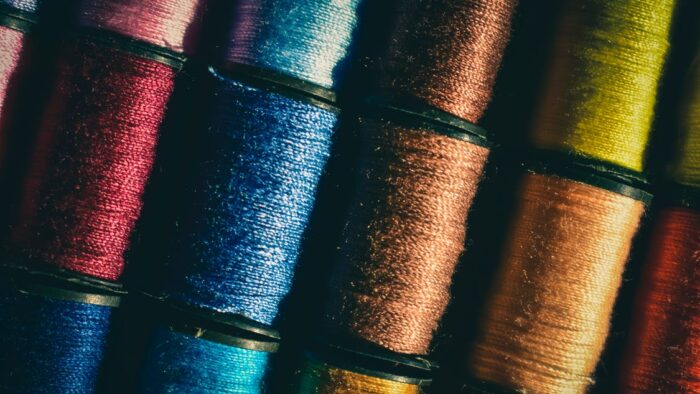The handloom sector of India provides employment to at least 4.33 million Indians. It is the second-largest industry in the country. It not only involves the weavers, but also shepherds, foresters and many more that are involved in the process of bringing a fabric to life. Each state in India produces a different and unique form of weaves. There is not a village in India that does not have handlooms. India is known to produce the best quality weaves since time immemorial that have found its way to every inch of this planet and adorned by various royals and celebrities. Indian weavers are one among India’s jewels and it is only right to celebrate their contributions to this country’s welfare.
August 7th is celebrated as the National Handloom Day. This day was born to commemorate the Swadeshi movement that was held in 1905 in Bengal to protest the partition of Bengal. The first handloom day was celebrated in 2015, when Prime Minister Narendra Modi, inaugurated it during the centenary celebrations of Madras University.
The main objective of this day is to be aware and create awareness of the contributions of the handloom industry to the socioeconomic development of the nation. It also creates wider recognition to the products that emerge from the industry. Handlooms are environmentally friendly. It uses natural dyes and does not require any sort of energy. It brings the whole family together. Each fabric created is unique and no two fabrics of the same print or colour will look alike. One can observe the mood of the weaver in the fabric, his creativity and diligence in the fabric. They have a unique sense of colour and design that makes every fabric stand out.
With the establishment of power-looms during the British era, the handloom industry experienced a setback. The export of yarn went up and foreign grown raw materials were imported to be used in the country. The power-looms were set up in the country and the handloom weavers were thrown out of jobs. The Swadeshi Movement started by Mahatma Gandhi brought the handlooms back in action. The movement was a proof of how Indians are self-sufficient and we can thrive well with our indigenous products.
Each state in the country creates different fabrics and there can be varieties from the same state. It is important to have a quick glance at the different fabrics and prints of India. Fabrics are made based on the climate and geography of a particular place. Most states in the north faces harsh winters and hence produces good quality wool. Kashmir is known for its fine pashmina and Shahtoosh shawls, which are unbelievably light, warm and cosy. Down south, Karnataka is known for its Silk fabric, particularly the mulberry silk. India is home to four different silk varieties- mulberry, eri, muga and tusser. Muga silk is found in Assam and Manipur. The designs on them are mainly those of stars and cross borders. Ikat prints are found in many parts of the country, however Orissa seems to have mastered the skill of Ikat prints. The tribes of Meher and Bulia have strived hard to bring their rich Oriya culture through these prints. Andhra Pradesh is home to various handloom saree fabrics ranging from Kalamkari, Pochampally, Venkatgiri, Gadwal, Dharmavaram, and Uppada. Kalamkari is a hand painted or block print pattern that finds its origin back to the Indus Valley Civilization. The kalamkari prints have become a trend these past few years. The tie and dye or more commonly known as Bandhani in Gujarat and Rajasthan are works of vibrant colours and glass work. The more complex the tie and dye is, the more authentic and skilled is the artist. The beauty and utter gorgeousness of a brocade work with gold and silver metallic threads can be found in Uttar Pradesh. Lest we forget, Kancheepuram silks are every South Indian women’s beloved. They are known for their intricate Zari and grand Pallus that take almost 15-20 days to be made.
Kandua Ikat from Orissa, Kala cottons from Kachchh, Ilkal from Bagalkot district in Karnataka, Ajrakh prints are some of the forgotten but revived fabrics and prints of India.
With the power looms still holding the upper hand and handlooms facing reduced returns from their heavy labour, most of the handloom weavers have looked at other means to earn a living. Due to this, a rich heritage of the country is slowly fading away. India is one of the few countries to have retained the handlooms and thus a day to celebrate handlooms is required to appreciate and learn of the rich heritage of the handloom sector. Every year on this day, weavers and artisans are called to set up exhibitions, speak to people about their work, designs and ideas. This also gives consumers a picture of where their apparel comes from and the work that goes behind making it. Youngsters who aren’t aware of the handloom sector are more aware of the exclusivity of the fabrics.
This has led to a lot of young designers to work closely with the weavers. They are teaching the weavers different techniques of dyeing and mixing fabrics. This also ensures steady employment and revival of those lost designs. Weavers are more confident; conduct and participate in workshops, take part in exhibitions and have become interactive and more vocal of their work.
As consumers, we must show our support by buying genuine handcrafted apparels and adorn it with pride. Happy Handloom Day!
Featured image by Criss F




